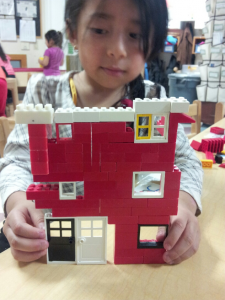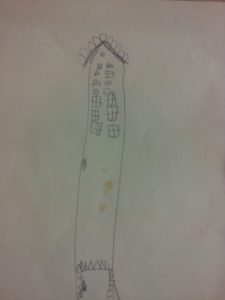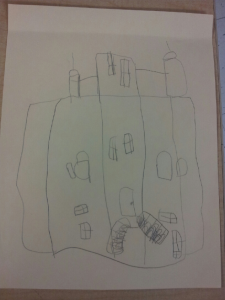Early Math in Projects: Part #1
As a preschool teacher, I’ve always had a bit of difficulty teaching math or using a lot of math language in the classroom. This slowly changed as a result of attending math professional development cohorts and changing my teaching practices to use math language when children were using specific materials such as magna-tiles, blocks, Legos within their everyday routine. This language included talking about math concepts and specific vocabulary connected to those concepts, as children were building with materials. Some of the concepts were height, width, and symmetry, and vocabulary or key phrases had to do with pointing out, creating, or extending patterns, asking how long, wide, or tall something was, using positional words to describe what the child was doing, and asking what could be done differently if a child encountered a problem. By using these practices, I became more comfortable using math language, children became used to hearing this math vocabulary, and they began using this math language as well. The next step was starting projects following children’s interests and the potential for incorporating math learning in these projects. This series of blog posts will examine how a project was implemented within my classroom and how children were able to explore math concepts within this project.

The possibility of a building project began by following children’s interests and things they noticed and pointed out during walks around the neighborhood. This included different types of buildings and specific details of these buildings such as the number of windows, stairs, a triangular roof versus a flat roof, arches, etc. Children were then taking this interest to the classroom by talking about these things and comparing their own houses and buildings that they lived in to the buildings that they saw on their walks. This interest in buildings was also represented in their daily play in things such as their journals, play dough, magnatiles, Legos, their block play, and even pretend play when they were pretending to be construction workers and “building a building from scratch” using large hollow blocks.
After discussing this with my teaching team and exploring the possibilities for math learning in this project, we decided to plan a building project using open-ended materials and breaking it down into ten sequential steps where each step was needed in order for the next step to happen. This project would also start with activities that were simple and straight forward and become a little more complex with each step. We knew that it would be a lot of work, but we were excited and committed to work together to make it happen!
The first step in our project was to go on a neighborhood walk with clipboards, card-stock and pencils. Children were invited to sketch a building of their choice and concentrate on a specific detail such as number of windows, stairs, roof, etc.

They had the opportunity to review their sketch with me and talk about the specific details in their sketch. This was a great opportunity me to work one on one with the child and model and encourage math language in their description of their building. We also discussed other possible concepts in their sketch such as quantity (number of windows and stairs), size (height and width), spatial awareness (positional words indicating location, direction and distance). The idea was not to have a perfect drawing, but for the child to be able to describe what they saw and what they drew.


In the next few blogs, I will talk about the rest of the steps of our building project and how the children were able to incorporate math at a basic level and reach a more complex level within their exploration of buildings.
I love the idea of the neighborhood walk. I’m impressed with the drawings they made.
I will have to look at Part 2 to see what you did next. Thanks for sharing.
I appreciate your observation about being uncomfortable using math language until you actively practiced using it, and noting that as you used it, the children became accustomed to hearing it and began using it as well. I’ve noticed that for myself, when I’m uncomfortable with something because it is unfamiliar to me, I tend to simply avoid it. Thank you for being an example and helping me to see that using math language is important and worth the effort.
I like the idea of teaching the kids the math language. This is something simple we can do by simply pointing things out or asking questions.
I am so very grateful you were honest/transparent concerning being uncomfortable teaching math and using math language in your classroom.
Finally, I am inspired by your commitment to improving your teaching practices. I look forward to learning more about math concepts and specific vocabulary connected to those concepts.
This walk incorporated the use of geometric shapes in order to build their own neighborhood. The children used words such as square, rectangle, curve, triangle, etc. From their sketches, the children will create their own buildings using wooden blocks, legos or magnitiles. They will have to deal with heights, lengths, and other spatial requirements so all the buildings fit appropriately in their neighborhood. This experience will enhance their understanding of geometric reasoning.
I like the walk through the neighborhood, children always seem more receptive when more of their senses are engaged